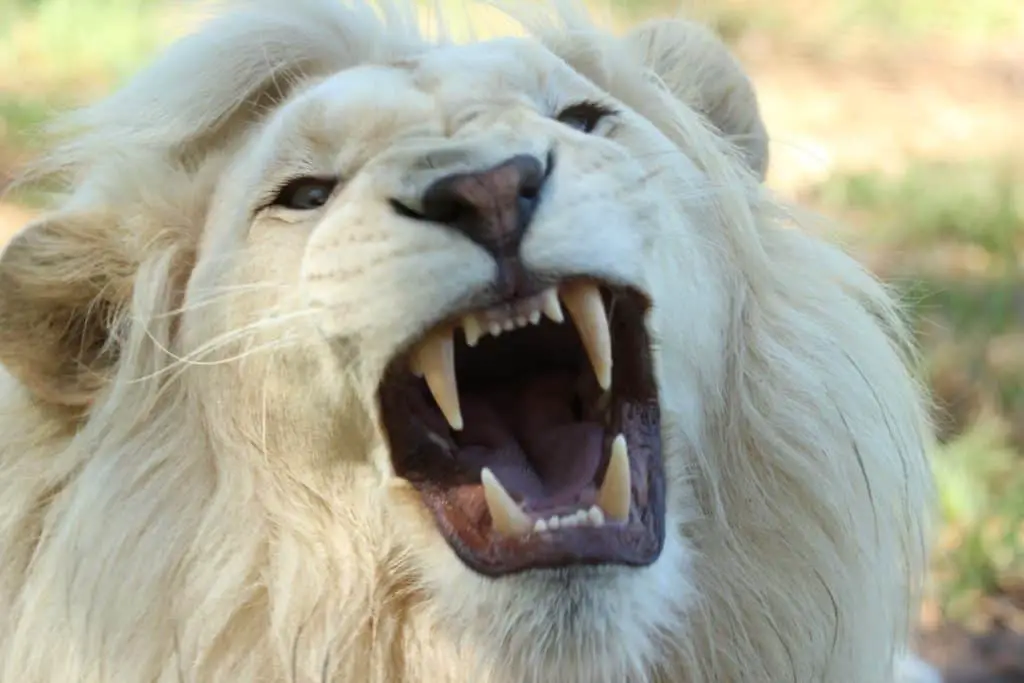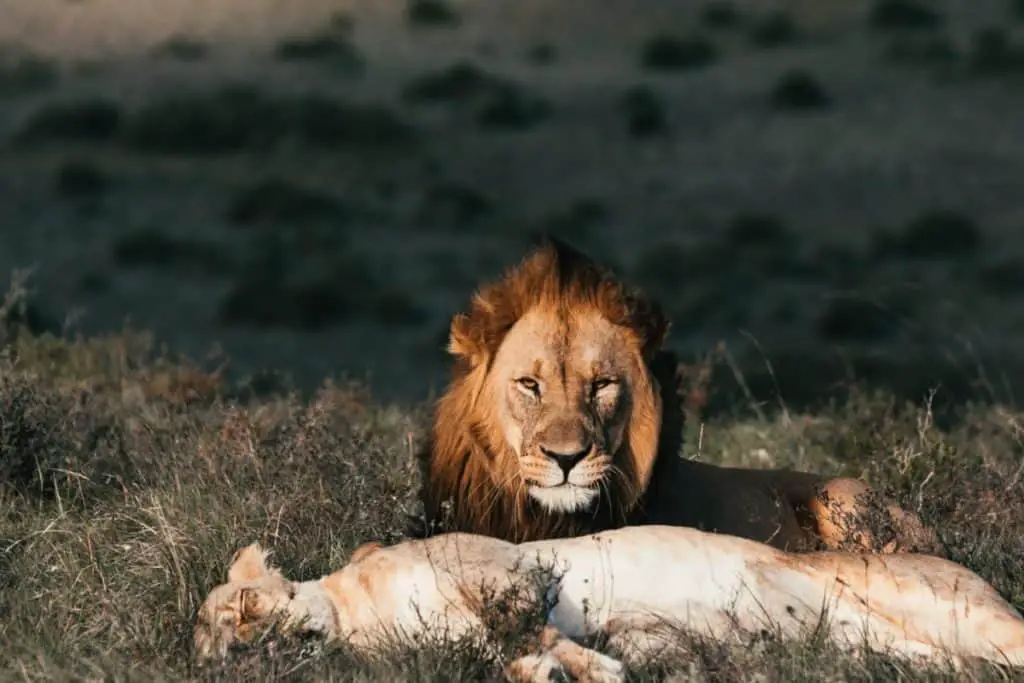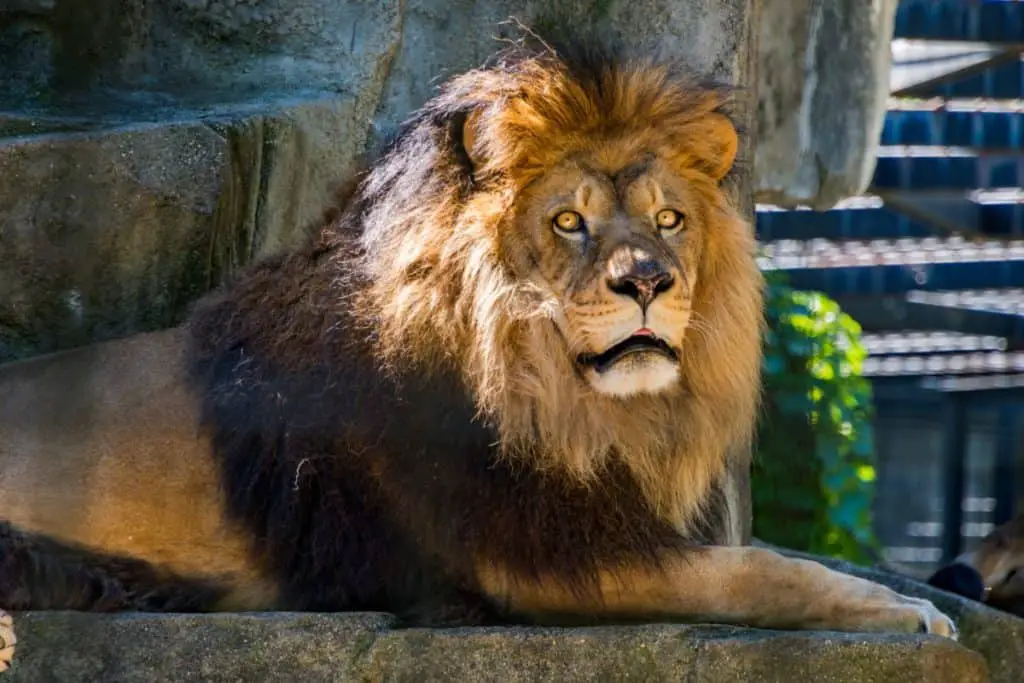
If you want to find out whether lions are considered to be producers, consumers, or decomposers then you’ve come to the right article.
As, in this article, I’ll be sharing the answer to this question with you, and also after you’ve read the answer to the main question then I’ll cover a few more closely related questions as well to extend your knowledge even more.
I hope you learn a lot from this article!
Is a lion a producer, a consumer, or a decomposer?
Lions do not produce anything and do not help with the decomposition of matter.
Therefore, they are consumers.
A lion may consume small bits of vegetation throughout its life, but often this will be incidental and not a matter of choice or desire.
Is a mountain lion a producer, consumer, or decomposer?
Mountain lions are not producers since they do not contribute to the growth of anything within their environment.
They are not decomposers since they do not take care of dead and decaying material.
They are, however, consumers because they sit at the top of the food chain.
Mountain lions have natural enemies, but none will seek to take them down unless there is no other course of action to take.
Is a lion a primary consumer?
It might come as a surprise to many that a lion is not a primary consumer thanks to the various trophic levels that exist in nature.
Because of this, a lion is considered to be a tertiary consumer and a quaternary consumer, not a primary.
As a carnivore, a lion exists on the tertiary level of the food chain, meaning that it will consume herbivores, omnivores, and other carnivores.
They can also be found on the quaternary consumers level because they’re on the absolute top of the food chain and from time to time will also eat tertiary consumers.
Is a lion a secondary consumer?
A lion does not occupy the trophic level of a secondary consumer typically since they are considered apex predators, meaning that nothing preys upon them, in a normal ecosystem.
A lion could be seen as a secondary consumer for eating such animals as deer and water buffalo, but they are typically set at the tertiary or quaternary level.
You won’t ever see lions being identified as primary consumers either because they simply do not feed on plant-based foods.
Check out the video below if you want to see lions hunt down a buffalo which is a primary consumer.
Is a lion a tertiary consumer?
Lions are tertiary consumers since they consume secondary consumers.
This means that they eat the animals that hunt and consume the primary consumers, meaning the herbivores.
A lion can be seen as a secondary consumer when taking down certain prey animals that are seen as primary consumers, but, generally, they’re seen as tertiary consumers.

Is a lion a quaternary consumer?
Lions are seen as quaternary consumers because they will from time to time consume the meat of tertiary consumers.
Generally, though, they are identified as tertiary consumers as they mainly eat the animals that are identified as secondary consumers.
Examples of secondary consumers that will be eaten by lions are various fish species, lizards, mice, spiders, snakes, moles, and various bird species.
Is a lion a carnivore?
Lions are considered to be carnivores thanks to the fact that the main staple of their diets consists of meat.
Since vegetation can wreak havoc with their digestion, they do not eat great quantities of grasses and other plants.
Is a lion a herbivore?
Lions cannot survive on vegetation and are, therefore, not considered to be herbivores.
Lions consume herbivores as a natural part of their diet as vegetation does not settle well within their GI tract and will cause a great amount of distress.
Much like other animals, lions will eat grass if they have an upset stomach.
Lions also manage to intake vegetation when consuming their regular meat-based foods which often happens by accident.
Is a lion an omnivore?
Since lions do not consume an abundance of vegetation, they cannot and are not considered to be omnivores.
Omnivores are capable of existing on a balance of meat and vegetation which would not satisfy a carnivorous diet of a lion.
Is a mountain lion a primary consumer?
Mountain lions do not qualify as primary consumers thanks to their place in the food chain.
They do not consume vegetation as doing so would not settle well within their stomachs and would cause a great deal of gastric distress.
Also, mountain lions are carnivores, not herbivores or omnivores which means that they can’t survive on plant-based foods.
However, mountain lions will consume vegetation when extremely hungry or sick, but it is not normal behavior.
Is a mountain lion a secondary consumer?
Based on research and observation, it can be said that mountain lions are primarily not seen as secondary consumers in the wild.
This is simply the case because mountain lions will, generally, eat various secondary consumers from time to time which makes them tertiary consumers.
Mountain lions will, for example, eat turkeys, various fish species, and various bird species that are all secondary consumers.
Check the video below if you want to see a mountain lion eating a meal.
Is a mountain lion a tertiary consumer?
Based on where mountain lions exist in the food chain, it can be said that a mountain lion is considered to be a tertiary consumer.
A mountain lion will, for example, feed on other carnivores and omnivores that consume herbivores.
This is why mountain lions are placed at the tertiary level of the food chain.

Is a mountain lion a quaternary consumer?
Since the mountain lion has some natural enemies in the wild, mountain lions aren’t considered to be quaternary consumers.
These enemies will from time to time challenge and even kill a mountain lion if the need is great enough, but typically they are allowed to remain unmolested as the majority of the quaternary consumers will not be after the meat of tertiary consumers but will rather eat large primary consumers like, for example, bison or deer.
Examples of quaternary consumers that might eat mountain lion meat from time to time are crocodiles, hawks, and hyenas.
What animals are considered consumers?
In nature, four types of consumers can be identified.
These types are known as primary, secondary, tertiary, and quaternary consumers.
Each type is known for its particular eating habits, as primary consumers will eat the primary producers (plants and vegetation), secondary consumers will eat the primary consumers (the herbivores), tertiary consumers will eat the secondary consumers (omnivores and carnivores), and quaternary consumers will eat the tertiary consumers (omnivores and carnivores).
Omnivores tend to eat just about anything that they can find, though many omnivores will stick to a selection of foods that allows them the easiest chance of catching their prey.
At every level, it has been seen that there are outliers that exhibit deviant behaviors that set them apart from the other animals, but these are the exceptions and not the rule since each type of animal will typically exhibit the behaviors that have been observed and recorded by people.
Animals like whales, elephants, cows, pigs, rabbits, and horses are all examples of consumers.
What animals are primary consumers?
A primary consumer is also known as a herbivore, as they consume plant matter and nothing else.
This includes animals like deer, cows, caterpillars, rabbits, sheep, and many others.
These are considered primary consumers because there is no level between them and the vegetation that they consume.

